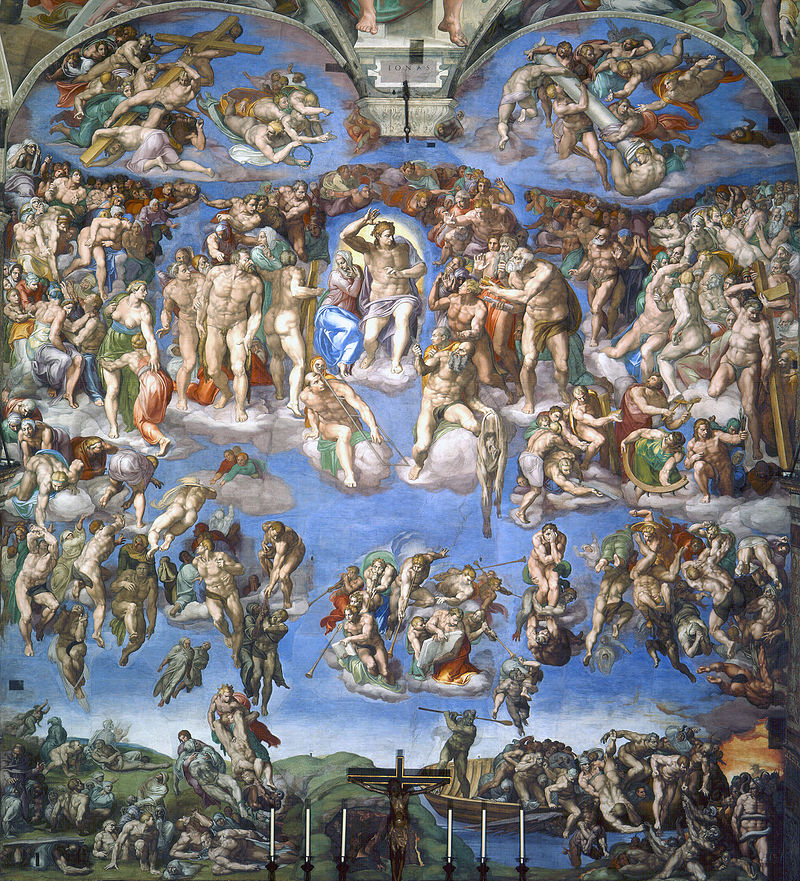|
Twenty-five years after completing the Sistine Chapel ceiling, a reluctant Michelangelo returned to paint the altar wall. He began painting in 1536, by which time Michelangelo was in his early sixties. Despite his age, Michelangelo spent five years painting 390 individual figures to depict the last judgement and second coming of Christ. According to the Book of Revelation in the New Testament, Christ will appear and judge the living and dead. The “chosen” people will enter heaven to live eternally with God, and the sinners will be sent to the fires of Hell. In the centre of the fresco is Christ, whose crucifixion wounds are still visible. His face is turned towards the damned, who are destined for Hell. His mother, the Virgin Mary, stands on his right with her face turned towards the Saved. Positioned around Christ are some of His disciples, such as Peter, who holds the keys to the Kingdom of Heaven. Opposite Peter is John the Baptist, recognised by his animal skin cape. Some of the disciples are recognisable from their attributes or deaths. Saint Thomas, for instance, holds a carpenter’s square, referencing his profession. Saint Bartholomew, on the other hand, holds his old skin, alluding to being skinned alive. Some believe the face on the skin is a self-portrait of Michelangelo. Michelangelo included a group of angels on clouds. Seven are blowing trumpets, as mentioned in the Book of Revelation. Other angels hold books in which to record the names of the Saved and Damned. Rather than depicting Satan, Michelangelo turned to Classical mythology for his representation of Hell. Charon, the ferryman of Hades, transports the Damned across the river to Hell, where they are received by King Minos, a judge of the Underworld. In the bottom left corner, the resurrected dead arise from their graves and float up towards the angels and Heaven. Some of the Damned struggle against the devils who pull them towards Hell and others are paralyzed with horror. On completion, Catholics were divided over the suitability of the painting. Whilst The Last Judgement often appeared in churches, it was unusual to see it over the altar. Others took offence at the nudity of the figures and accused Michelangelo of being insensitive to proper decorum. The Vatican council quickly hired the Mannerist painter Daniele da Volterra (1509-66) to paint discrete drapery over the exposed genitalia. These additions were added after the original paint had dried, so fifteen of them were easy to remove during restoration work between 1990 and 1994. Today, the fresco is a combination of Michelangelo’s intended design and Volterra’s alterations. Part Six of Michelangelo’s Sistine Chapel, printed with permission from Hazel Stainer. To view the article in full, click here or visit www.hazelstainer.wordpress.com
18 Comments
|
©Copyright
We are happy for you to use any material found here, however, please acknowledge the source: www.gantshillurc.co.uk AuthorRev'd Martin Wheadon Archives
June 2024
Categories
All
|

 RSS Feed
RSS Feed